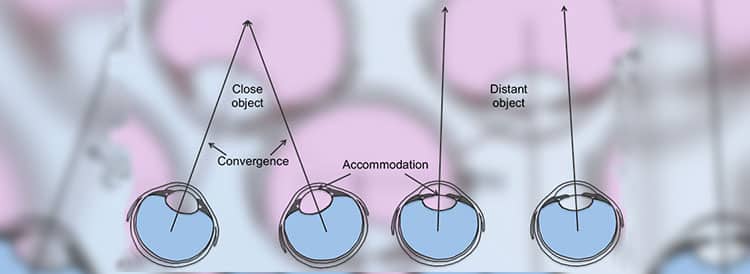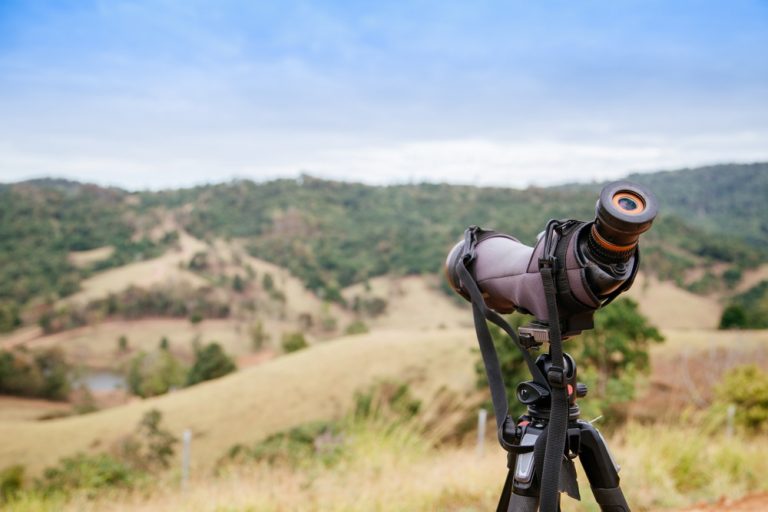Monocular and binocular cues basically deal with the depth of visual perception.
The most significant difference between monocular vs binocular cues is that one provides deep information about a scene when viewed with an eye (monocular cues) while the other also provides in-depth information about a scene when viewed with both eyes.
This feature mainly differentiates a monocular from a pair of binoculars.
Both cases deal with the ocular ability to perform in two/three-dimension space based on distance from the observer.
These two major varieties of depth perception cues have different applications which will be elaborated on in this article.
The contents will be discussed in detail including a piece of well articulate information that shows all the intriguing differences between monocular cues and binocular cues.
Difference Between Monocular vs Binocular Cues
What Cues Actually Are?

In psychology, cues are referred to as depth perception typically classified into monoculars and binoculars.
They are responsible for the keen perception of the eye(s) when viewing an object at a particular distance (depth).
Regarding animals, they may be called depth sensations instead because of their ability to move accurately or constantly respond to their perception of an object’s area.
Depth perception arises from a variety of depth cues that portray special capabilities.
Monocular Cues Defined
Here, we refer to the perception of an object with respect to the visual ability of an eye.
There are times when we feel closing an eye may give us better judgment in the distance of an object.
Some of the significant factors responsible for this phenomenon include the following.
1. Relative Size
This is a case whereby two objects that are deemed to be of similar sizes are judged with respect to the larger one having a closer appearance to an observer when compared to the smaller one.
2. Interposition
When two objects partially cover each other (overlap), the one that is seen behind appears further away than the actual distance.
In essence, this information merely enables the observer to create an intuitive disposition of relative closeness.
3. Aerial Perspective
This case of depth cue refers to objects that tend to look unclear or quite blurry compared to one at a closer distance due to the influence of the atmosphere.
4. Linear Perspective
It allows an observer to perceive the depth of an area when viewing parallel lines that seem to converge at infinity at first.
5. Texture Gradient
This is another essential monocular cue that deals with the texture of an object and how it affects an observer’s visual perception with reference to depth (distance).
6. Motion Parallax
In this case, the monocular depth cue causes that are around an observer in motion, to pass by faster than the one that is farther away.
That is, the farther something appears, the slower it seems to pass away from the observer.
Binocular Cues Defined
Easily deduced from its connotation, “bi,” is defined as the ability of both eyes to perceive an object in three-dimensional space.
When you compare the form of images when seen with the two eyes, the brain tends to perceive the object from slightly different perspectives with reference to the angle(s) of view.
The major factors that are accompanied by this phenomenon include the following
Stereopsis
It is also known as retinal disparity that’s claimed to be the primary binocular cue for depth.
It explains how an object is looked at with eyeballs at fairly different angles so that the brain can give slightly different perspectives.
This factor occurs due to the horizontal separation parallax of the eyes.
Convergence
This is a binocular oculomotor cue that deals with depth perception, specifically.
It occurs as a result of when sensation from` extraocular muscles tend to exist as the convergence of the eyes focused on an object is stretched by the muscles.
Study shows that the effect of the convergence phenomenon will be favored when used at a distance closer than 10 meters to an observer.
Monocular Cues vs Binocular Cues at a Glance
So, having discussed the two types of depth cues that exist, we can easily give a concise contrast between monocular and binocular cues with respect to usability and magnificence.
First off, we understand that one is performed by virtue of an eye while the other involves either eye.
Monocular depth cues include factors such as relative size, size consistency, and superimposition which rely on information perceived from an eye while binocular depth cues include stereopsis, convergence, and yielding depth from the two eyes through parallax exploitation.
| Monocular cues | Binocular cues |
| Relative Size – For two objects having a roughly identical size, the apparently larger object looks to be closer to the observer than the one that looks smaller | Retinal Disparity – A situation where each eye catches a slightly different image of the same object due to its location. |
| Absolute size and Familiar size – The former depicts how the eye perceives larger objects to be farther than objects that are smaller but in the same area. The latter deals with how the perception of size(s) can be influenced by an observer’s acquaintance with certain objects. | Binocular Convergence – It basically helps the observer perceive how close or far an object is. This involves the physiological angles that either eye need to rotate to focus on the object. |
| Elevation – This is a case whereby objects that are positioned closer to a horizon tend to be perceived farther and vice-versa | |
| Texture Gradient – It is defined by an observer’s depth perception that is influenced by the texture (surface) of an object. | |
| Motion Parallax – This brings about a visual clue of perception with regards to distance wherein an observer in motion sees objects around move away from position faster than the farther ones. | |
| Aerial Perspective – Objects that are far from an observer seem slightly blurred due to the atmosphere. | |
| Linear Perspective – Here, lines that are parallel seem to converge at a point as they travel into the distance from an observer. | |
| Overlap (or Interposition) – A case wherein an object that is being overlapped by another appears farther away. | |
| Shading and lighting – Objects that appear brighter to an observer seem closer than the objects that appear darkened. | |
| Accommodation – In this case, specific eye muscles contract which alters the shape of the lens when focused on near objects. The muscles then relax if the position of the object is at a farther location. |
How Do You Use Molecular Cues?
Its application is versatile in many instances; you can try to observe visually how you easily tell the depth when at the top of a staircase, corners of buildings appear larger and more textured which makes it seem closer, objects far away seem smaller and thus, gives us a judgment of its apparent size.
All these situations contribute to the depth perception of monocular cues, typically.
How Do You Use Binocular Cues?
The application of binocular cues gives us the ability to determine where in 3-D space an object is in relation to our position.
It is by virtue of this phenomenon that you might feel you perceive depth when viewing 3-D movies, Magic Eyes, or stereoscopic photos.
The intrinsic nature of monocular and binocular cues clearly differs with unique characteristics but one can say that both phenomena arise from the depth perception of the eye(s).
Understand that the application of monocular cues is more effective when comparing the apparent to the real structure of an object while binocular cues aid us to expand more than one perspective in the form of an object in order to get apt depth perception.
Key Takeaways From The Differences Between Binocular Vs Monocular Cues
Cues refer to the distance and size of objects when compared to the distance and size of other objects
Monocular cues contribute to your total experience of a scene with one eye, your perception of distance and depth, and your interpretation of your position in relation to other objects in the scene.
Binocular cues contribute do the same, but with both eyes.









Leave a Comment